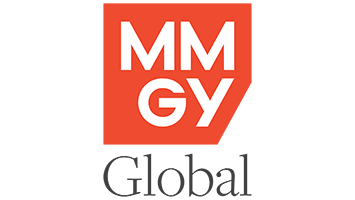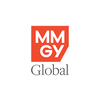MMGY Global’S 2016 Portrait of American Travelers® Survey Reports Record-Breaking Increase in Leisure Travel and Redefines Travel Trendsetters
Insights point to unprecedented growth in travel, increased traveler segmentation and travel suppliers acting as the new online travel agents

MMGY Global, the leading integrated travel and hospitality marketing firm in the U.S., has released findings from its annual Portrait of American Travelers® (POAT) survey that highlights a record year for the leisure travel industry. According to the 26th annual POAT, Americans' intent to travel is up 14 percentage points over 2015, with intent to spend on transportation, lodging and entertainment to increase by nine points. These findings show that travel intentions have not only recovered from the Great Recession, but have soared above pre-recessionary levels. The report also reveals the importance of micro-segmentation in lieu of defining travel audiences by broad generational groups, as well as the role reversal between travel suppliers and online travel agents in consumers' preferences for travel purchase.
The POAT, which is the longest continuous survey of its kind in America, includes responses from 2,948 U.S. adults surveyed this year who have taken at least one overnight trip at least 75 miles from home in the past 12 months. The study measures over 2,000 variables, thoroughly analyzing and revealing American travelers' perceptions of travel, planning priorities and emerging vacation behaviors and inclinations.
"We are looking at the potential for a record year in the travel industry, resulting in a myriad of opportunities for travel marketers. This is a pro-growth environment that can be leveraged by investing in new products, technology and innovations for the future," said Clayton Reid, president and CEO of MMGY Global. "These insights can help the industry more effectively target today's travel trendsetters and determine where to invest to maximize anticipated return."
The following are topline results from the first of five research publications that will be released this year:
MMGY Global predicts a record number of vacations and new highs in vacation spending among American travelers in the next 12 months. The market's intention to vacation during the next 12 months represents a 10-year high that surpasses the pre-recession record.
- 28 percent of travelers indicated an intention to take more vacations, while only 14 percent reported that they plan to take fewer, resulting in a 14-point net positive variance.
Vacation spending has fully recovered from the Great Recession and spending intentions have soared well above the pre-recessionary levels in recent quarters.
- In 2016, travelers reported having spent an average of $5,048 on vacations in the previous 12 months – an impressive 30 percent increase from 2010, and a 12 percent increase from an already-strong 2015.
- Travelers are planning to spend an average of $5,182 in the next 12 months – an astonishing 23 percent increase in only four years, and a nine percent increase in the past year.
Micro-segments driving increases in travel
The days of defining travelers by broad generational segments are coming to an end. Recognizing that Millennials are the largest generation in U.S. history (84 million compared to 78 million baby boomers), this year's report dug deeper into the data to better understand the behaviors of micro-segments within this group, as well as within Gen Xers and baby boomers, which includes:
1. HENRYs – "High Earner, Not Rich Yet" traveler is a luxury consumer with a high, steady cash flow who is ready to spend for quality and service.
- Three-fourths of HENRYs are willing to pay full price for a vacation and two-thirds of HENRYs expect personalized attention and options while on vacation.
- If HENRYs are disappointed by a travel service provider or a destination, they share it – 45 percent of HENRYs post written reviews on travel review websites or blogs.
- Marketers need to join the online conversation and be proactive in monitoring and responding to segments like HENRYs.
2. GottaGoSOLOs – a traveler who is married with children but vacations alone to reclaim his/her independence.
- A full third of all vacations taken by GottaGoSOLO travelers are taken alone, while four in ten were with their children and a quarter with their significant other and no children.
- GottaGoSOLOs take more vacations than committed family-only travelers, and they reported a 61-point net positive variance in the intent to take more vacations during the upcoming 12 months.
- This phenomenon appears to be closely correlated to age – almost three-fourths of GottaGoSOLOs are Millennials, while a third are Xers.
3. YAHTZEEs – "Young At Heart Travelers Zooming Everywhere Enthusiastically" are active retirees who are traveling more and spending more, but are slow to join the sharing economy.
- On a relative basis, this segment is spending more on travel (an average of $7,988 on vacations with the intent to spend more) and taking more extended trips than most any other micro-segment identified in this year's study.
- YAHTZEEs are domestic vacationers – nine in 10 of their vacations were within the United States, and they generally opt for revisiting past favorites.
- They are slow to adapt to the sharing economy, and only one in 10 has tried shared accommodations, such as AirBnB, and less than one in 10 has used ride-sharing services such as Lyft or Uber while on vacation.
4. Jet Sweaters – amateur adult athletes without children who are redefining wellness in travel.
- Ten percent of American travelers travel annually to participate in 5K races, marathons, triathlons, cycling races, or other competitive athletic events.
- More than eight in 10 Jet Sweaters vacation in order to enhance existing relationships and to experience different cultures, compared to fewer than seven in 10 non-sporting travelers without children. Three-fourths of Jet Sweaters want to experience new cuisines, significantly more than their non-sporting counterparts.
5. The Brat Pack – families with children 12 and under who influence vacation-planning decisions.
- Three in four Brat Pack members select vacation destinations based on activities available to children, compared to two-thirds of travelers with teenagers.
- Six in 10 Brat Pack members say their vacations are entirely-child focused, compared to just a quarter of travelers with teenagers.
- Messaging to Brat Pack families should be targeted to the needs and preferences of children, whereas travel messaging to families with teens should speak more to their parents and their expectations of a family vacation.
*MMGY Global coined the names of the micro-segments listed above with the exception of HENRYs.
Travelers have typically turned to travel supplier websites for inspiration and have relied heavily on online travel agents for booking. However, our research shows that these roles are reversing. When looking for travel and inspiration for their next vacation, just 18 percent of travelers turn to brand.com sites, down six points from 2015. However, 21 percent turn to online travel agents during this phase of the purchase path. Likewise, 32 percent of travelers prefer to book directly from travel suppliers, compared to 31 percent who book on online travel agent sites. There are other signs of this role reversal, as well:
- Half of all travelers who flew to their vacation destinations during the past 12 months typically booked their flights through an airline website or app, while only a third used an online travel agent website or app.
- Forty percent of travelers now typically book accommodations through a hotel website or app, while only a third booked through an online travel agent website or app.
The study points to hotels taking a more aggressive stance to drive direct bookings, while online travel agents continue to invest in building awareness and preference for their sites at the top of the planning decision funnel. Numerous hotel brands have, in recent months, introduced guaranteed lowest-rate pricing for their loyalty club members, thereby providing a compelling incentive for consumers to book direct on brand.com sites.
For more information about these insights, or to subscribe to the 2016 POAT white papers, visit www.mmgyglobal.com.
About the 2016 Portrait of American Travelers®
Now in its 26th year, MMGY Global's Portrait of American Travelers® survey provides an in-depth examination of the impact of the current economic environment, prevailing social values, and emerging travel habits, preferences, and intentions of Americans. It is widely regarded as a leading barometer of travel trends and an essential tool for both the development and evolution of brand and marketing strategy. The nationally representative survey of 2,948 U.S. adults, who have taken at least one overnight trip of 75 miles or more from home during the previous 12 months, includes 2,134 households with an annual income between $50,000 and $124,999; 644 households with an annual income between $125,000 and $249,999; and 170 households with an annual income of more than $250,000. Data was collected in February 2016.
About MMGY Global
MMGY Global is the world's leading integrated marketing firm specializing in the travel, hospitality and lifestyle industries. With operating brands across the world, the award-winning organization maintains a global communications practice in all marketing channels, serving many of the world's premier travel and tourism brands. As a company dedicated to the travel industry, MMGY Global strives to create a connected, inclusive and peaceful world by promoting travel as a cultural bridge of understanding. For more information, visit mmgyglobal.com.


